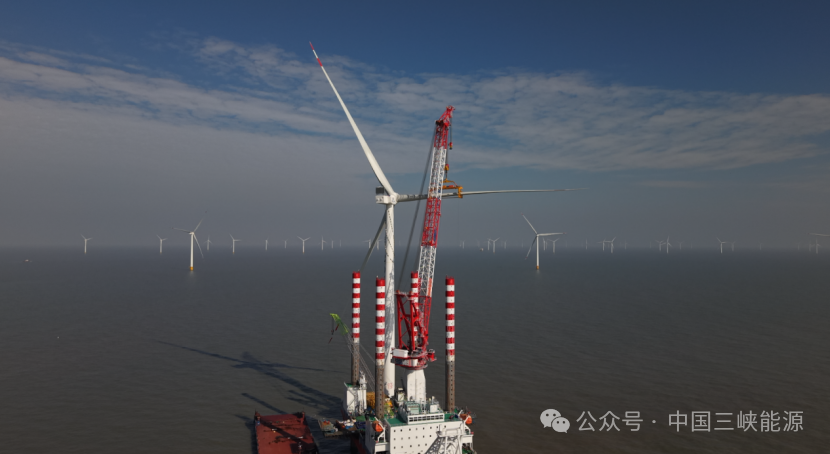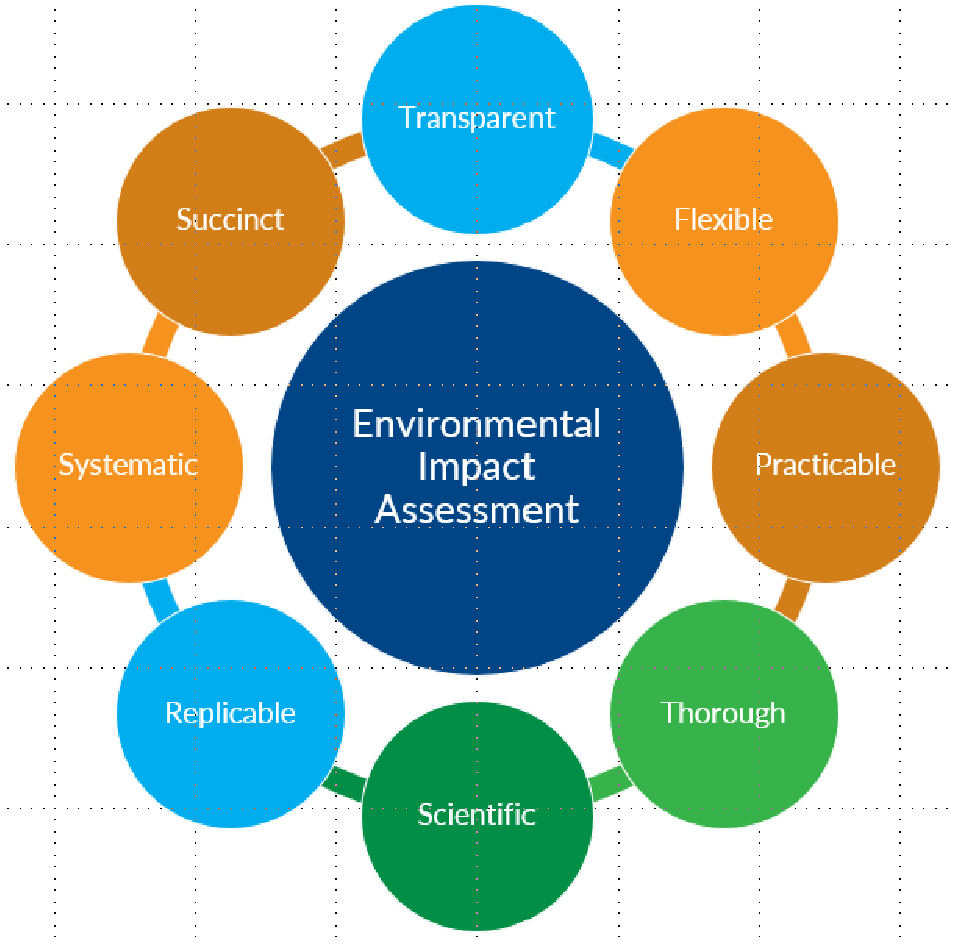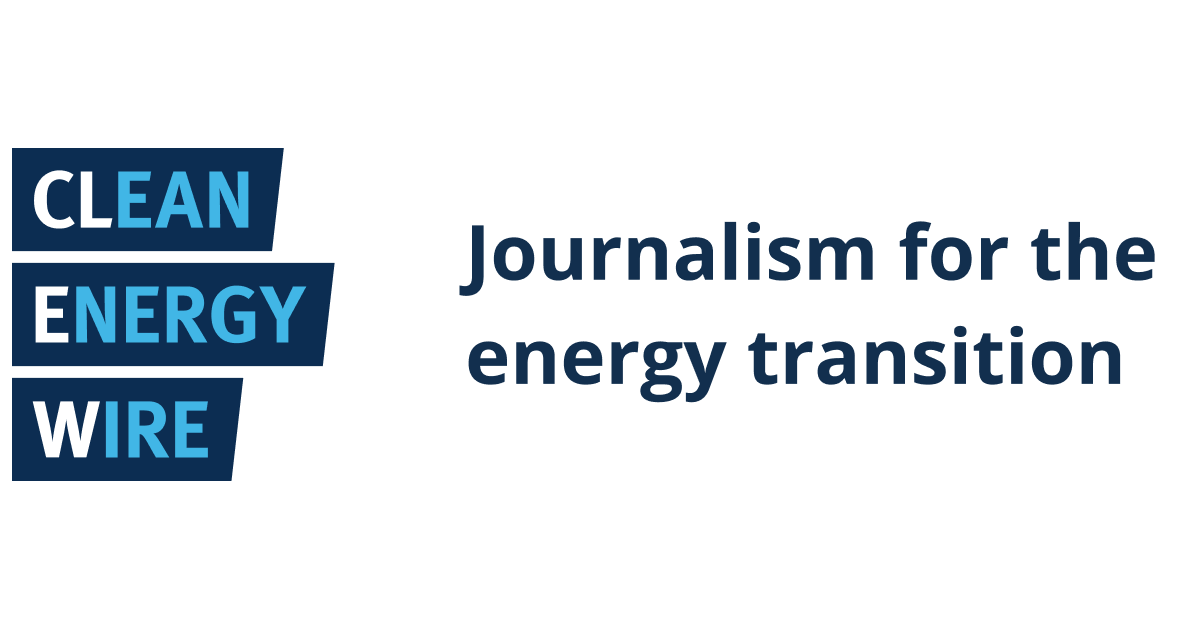Exploring the time-varying asymmetric effects of environmental regulation policies and human capital on sustainable development efficiency: A province level evidence from China
The Sustainable Development Goals (SDGs) for 2022 progress report indicates that global policies to reach SDGs 7 and 8 might not be as good as they could be. In the recent discussions at COP27 and in academic literature, sustainable development efficiency has also been brought up as a way to close this gap. Achieving sustainable development efficiency necessitates a favorable policy environment within economies. Environmental policies, human capital, and broader policy dimensions are just a few of the factors that influence this environment. The existing policy discourse and academic literature suggest that environmental regulation policies, human capital development, industrialization, urbanization, and GDP are potential drivers to achieve sustainable development efficiency. Hence, the study tends to erect a policy framework by investigating the time-varying effects of environmental regulation policies and human capital on sustainable development efficiency with the consort of industrialization and urbanization in a large economy—China. To this end, the study deploys the province-level panel data from 1998 to 2017 and utilizes several advanced econometric methods (Non-Parametric Panel Data Model, Wavelet Quantile Correlation, and Non-Parametric Panel Granger Causality Test). The results suggest that positive shocks in environmental regulation policies and human capital have favorable effects on sustainable development efficiency; however, their negative shocks have adverse impacts over time. Further, industrialization and urbanization significantly deteriorate the sustainable development efficiency. Based on the results, phase-wise policies are recommended in order to achieve SDGs 7 and 8.

1. Introduction
In recent times, China has made remarkable strides in obtaining impressive economic growth, as its GDP was $6.09 trillion in 2010 and which escalated to $17.73 trillion in 2021, representing 18.37% of worldwide GDP (World Bank, 2022). Consequently, this commendable progress led to an exorbitant cost as the economy grappled with the soaring levels of environmental pollution, a dire threat to sustainable development and ecological balance at the local and global level. This environmental exigency might be on account of the unsustainable deployment of fossil fuel-based energy supplies. The combustion of fossil fuels causes oxidation of the hydrocarbon structure of these fuels, resulting in ambient air pollution (Tumala et al., 2023; Liu et al., 2023a, Liu et al., 2023b). Fig. 1 categorically visualizes the high intensity of carbon emissions in the thirty provinces of China, as reported by China Emission China Emission Accounts and Datasets (2023), and China emitted 27% of the global carbon dioxide (World Bank, 2022). Therefore, the Chinese government committed to the global community to cut down carbon emissions to make a “carbon neutral China” by 2060 and achieve Sustainable Development Goals (SDG), specifically, 7 and 8 (Climate Ambition Summit, 2020).
In order to accomplish the ambitious goal of sustainable economic development, the Chinese authorities enacted several environmental regulations and policies to foster economic growth while disrupting the rising ratio of carbon emissions (Balsalobre-Lorente et al., 2023; Zhang et al., 2021).
To obtain sustainable development along with environmental sustainability, the Chinese authorities remained proactive and have practiced several environmental regulation policies over the years (Zhang et al., 2022). China's first comprehensive environmental law was launched in 1989. It established the State Environmental Protection Administration (SEPA) to enforce environmental laws. Likewise, the Environmental Impact Assessment (EIA) law was proposed in 1990 to assess all significant development projects before proceeding to identify environmental issues and ensure mitigation. Also, China's Agenda 21 (1994) aimed for global sustainable development. China's sustainable development strategy prioritized economic growth, social improvement, and environmental conservation. The Clean Production Promotion Law (2002) encouraged firms to decrease waste, save resources, and reduce pollution. Similarly, The Circular Economy Promotion Law (2008) promoted a resource-efficient, waste-free circular economy. It encourages garbage recycling. Another law, “China's Air Pollution Prevention and Control Law” (2015), assisted in reducing city air pollution while imposing tight criteria for factory and vehicle emissions. China's Soil Pollution Prevention and Control Law (2018) prevented soil contamination. It required firms to clean up polluted locations and hold them accountable (Zhang et al., 2022).
One such policy, launched in 2021, is nationwide carbon markets, comprising around 2200 power sector enterprises, in order to price carbon emissions (Zhang et al., 2021). Further, China has built a green finance system, including green bonds and green loans, to encourage low-carbon growth. In addition, China leads the world in wind and solar energy generation. By the end of 2030, China, as pledged by the Chinese government, will have the capacity to produce 35% of its electricity from green sources. Likewise, through manufacturer incentives and consumer subsidies, China is actively promoting the development and adoption of electric cars; thus, it became the leading electric vehicle market, delivering almost 1.3 million cars in 2020. Besides, China has taken several serious steps, including building and appliance requirements for energy efficiency, to enhance energy efficiency (China Country Climate and Development Report, 2022). All these environmental policies attracted the academic community to assess their contribution to sustainable development in China. Hence, it is rational to analyze how environmental regulation policies contribute to accelerating the sustainable development process.
Simultaneously, China has taken several remarkable steps to enhance human capital. To do so, Chinese authorities targeted education and technology, which significantly contributed to the trigger of human capital in China (Fan et al., 2023; Chen et al., 2023; & Liang et al., 2022). For instance, the Chinese government has undertaken several education reforms since 2005. In 2010, the “New Curriculum” was introduced to promote technical and innovative education across China (Opoku et al., 2022). Also, Chinese authorities invest a large chunk of their budget on rural education in order to enhance the overall education level at the nation-level, as 32 billion dollars were invested in rural education in 2018 (Chen et al., 2023). Since the rise in education level and technological progress tend to increase the number of efficient workers (Solow, 1956), this process leads to enhance numbers of efficient human capital. Also, the ability to make better decisions on account of education and experience increases the efficiency of human capital. Since human capital works as an essential pillar to escalate economic growth (Solow, 1956), it is important to investigate its impact on sustainable development.
Due to the significance of environmental regulation policies and human capital, numerous scholars have made efforts to investigate their impact on sustainable development. In this regard, the academic community has utilized various economic indicators as measures of sustainable development efficiency, including ecological footprints and green growth (Razzaq et al., 2023; Ofori et al., 2023; De Haas and Popov, 2023), carbon emissions (Li et al., 2023), and green energy (Wu et al., 2023; Dogan et al., 2023). However, there remains a considerable gap in this field, highlighting the following aspects: previous literature has not employed a comprehensive indicator to assess the efficiency of sustainable development and analyze its response to environmental regulation policies. Similarly, the effects of human capital on a comprehensive measure of sustainable development have not been explored yet. Furthermore, prior studies have primarily focused on examining average and symmetric effects, whereas the majority of economic trends exhibit asymmetric characteristics (Chishti et al., 2023a; Chishti and Patel, 2023). Therefore, in order to address the aforementioned gaps, this study aims to pose the following research question:
Research question: How are the impacts of environmental regulation policies and human capital on sustainable development efficiency time-varying and asymmetric?
The goal of this study is to investigate the dynamic factors that impact the effectiveness of sustainable development, with the aim of proposing policies for achieving SDG 7 and 8 goals. This study contributes to the scientific literature in several ways. Firstly, it is the first study to utilize the variable of sustainable development efficiency as a more accurate measure of sustainable development. Secondly, this is the first study that targets to divulge how environmental regulation policies shape sustainable development efficiency. To do so, the study splits environmental regulation policies, following Chishti et al. (2021), into positive and negative shocks to explore the detailed and informative findings from a policy-making perspective. Thirdly, another significant contribution of the study is to investigate the effects of positive and negative shocks on human capital on sustainable development efficiency, unlike the previous studies, which considered the linearity of human capital. Fourthly, the study analyzes the effects of industrialization, urbanization, and economic growth on sustainable development efficiency.
Fifthly, for the SDG 7 and 8 goals to be made into a policy framework, the right methodological techniques are needed. The study uses province-level panel data for China from 1998 to 2017, and the chosen economic series seem to be asymmetrical, which shows that their trends change over time and suggests a plausible time-varying link. All such characteristics of the opted series should be taken into account properly. Therefore, to capture the time-varying nexus, the study deploys a non-parametric panel data model by Churchill et al. (2019), wavelet quantile correlation by Kumar and Padakandla (2022), and a non-parametric panel Granger causality test by Dogan et al. (2023). These techniques enable the study to explore robust and reliable results in order to design a comprehensive policy framework to achieve SDGs 7 and 8.
The remainder of the study is organized in the following order: Section 2 covers a pertinent literature review to highlight the literature gap. Section 3 explains a theory-based framework to formulate the econometric model. Section 4 highlights the econometric tools, and Section 5 covers the results along with a discussion. Section 6 concludes the results for developing a policy framework.
2. Literature review
Sustainable development efficiency (i.e., the ability of a nation to achieve sustainable development goals while minimizing the adverse of economic growth on the environment and natural resources) depends on how policymakers in an economy perceive the prospect of sustainable development efficiency (SDE). Perceptions of the SDE play a crucial role in how policymakers aim to promote it. Policy instruments can be used to catalyze this efficiency, which may take the form of environmental regulation policy, human capital development, urbanization or industrialization. In the current section, the relevant published studies will be critically reviewed to identify the comprehensive research gap.
The debate on how environmental regulation policies affect sustainable development is a recent development in the literature. Specifically, after the Paris accord, the worldwide economists tended to analyze the association at firm and national level while focusing on the direct and indirect channels.
The environmental regulation policies play a crucial role in supporting the sustainable development (Appiah et al., 2023). For instance, Sun et al. (2023) observed the same outcome while analyzing the impacts of environmental regulations on green growth via triggering the green energy markets for China's coastal areas. Another study on China by Zheng et al. (2023) assessed the effects of environmental regulations on green total factor productivity (a proxy for sustainable development) and concluded that favorable impacts of environmental regulation. This phenomenon is observed for 108 cities in the Yangtze River Economic Belt, China. Also, the same results were deduced by Jin et al., 2023a, Jin et al., 2023b for China, while using the green total factor productivity as measure for sustainable development. Additionally, there are some researchers which use some other economic variables to measure sustainable development and analyze how such variables respond to the environmental regulations. For example, Wang et al., 2023a, Wang et al., 2023b, Wang et al., 2023c deploy green transformation performance as measure of sustainable development, while taking data for 49 large- and medium-sized iron and steel firms in China. It was affirmed that environmental regulations foster the green transformation performance. Binh An et al. (2023) identified that environmental regulations exhibited a supportive behavior towards sustainable development through enhancing the environmental quality in top eight advanced nations. Sadiq et al. (2023) developed the sustainable development index in order to measure the sustainable development. The results demonstrated that environmental regulations significantly promoted the development in ASEAN nations. The same phenomenon was witnessed by Zhao et al. (2022), Zheng et al. (2023), & Zou and Zhang (2022) for China, Abban et al. (2022) and Ahmad et al. (2021) for G7 nations, Hao et al. (2022) for selected global economies, and Zhou et al., 2022a, Zhou et al., 2022b for China.
Based on the above anecdotal evidence, it can be inferred that environmental regulations play a vital direct and indirect role in determining the sustainable development. Therefore, it is rational to further hypothesize that environmental regulation can significantly contribute in triggering the sustainable development efficiency.
Huma capital, among the several important drivers of economic development, plays a key role in achieving the sustainable development through triggering the productivity, economic diversification, and innovation (Schultz, 1993). The exploration of the nexus between human capital and sustainable is not a new phenomenon. However, the available literature indicate that majority of the previous studies intended to analyze the indirect effects of human capital on sustainable development. However, the pertinent literature lacks the direct effects of human capital on sustainable development, calling for more exploration in this area.
Assessing the effects of human capital on sustainable development, Friderichs et al. (2023) observed that human capital's role is significant via disrupting the income inequality in South Africa. Wang et al., 2023a, Wang et al., 2023b, Wang et al., 2023c also reported that human capital was among the crucial economic variables which significantly enhanced the sustainable development through improving the environmental quality for the sample of 208 nations. The same results were documented by Saqib et al. (2023) for selected 16 European economies. Also, Nkemgha et al., 2023a, Nkemgha et al., 2023b witnessed that human capital triggered the erection of new infrastructure, industrialization process, and consequently economic growth. The study concluded that human capital was a crucial variable for boosting the sustainable development in Africa. A study on China by Jin et al., 2023a, Jin et al., 2023b assessed the effects of innovative human capital on sustainable development through the channel of green total factor productivity. The findings suggested the important role of human capital innovation in upsurging the green total factor productivity. Similarly, Hondroyiannis et al. (2022) for selected global nations, Opoku et al. (2022) for OECD nations, Shahbaz et al. (2022) for China, and Rafi et al. (2021) for India reported that human capital played an essential role in fostering the sustainable development through boosting various macroeconomic variables.
The above review supports the argument that human capital is an essential factor to put the economy on the path of sustainable development. However, the dashboards leave a difficult task for readers to understand the measurement of sustainable development as the pertinent studies use several proxies to measure the sustainable development (Hirai and Comim, 2022). Simply put, majority of the previous studies analyze the indirect effects of human capital on sustainable development. Hence, the prior literature calls for developing a more comprehensive measure for sustainable development to assess the direct effects while hypothesizing the favorable effects of human capital on sustainable development.
Urbanization is one the crucial economic drivers which significantly influence the sustainable development (Hoselitz, 1957). The mainstream literature dashboard argues that, on the one side, urbanization process significantly thrives the economic growth, and on the other side, it deteriorates the environmental quality through emitting the carbon emissions. Hence, the effects of urbanization on sustainable development remains contradictory. Further, most of the studies assess the effects of urbanization on sustainable development indirectly.
Many studies (Dilanchiev et al., 2023; Khan and Majeed, 2023; Fan et al., 2023; Chen et al., 2023; Liang et al., 2022; & Zhou et al., 2022a, Zhou et al., 2022b) have identified that urbanization considerably escalates the economic growth through creating the jobs, erecting the infrastructure, and expanding the market size. Contrarily, some of the studies argued that urbanization disrupt the economic growth process by increasing the enormous resources depletion (Pata and Ertugrul, 2023; and Chien et al., 2023) and income inequality (Zhao et al., 2023; Wang et al., 2023a, Wang et al., 2023b, Wang et al., 2023c; Sun (2023). In a similar vein, numerous studies (Naqvi et al., 2023; Chen et al., 2023; Huo et al., 2023; Lee et al., 2023; Li et al., 2023; Numan et al., 2023; Xie et al., 2023a, Xie et al., 2023b; & Liu et al., 2023a, Liu et al., 2023b) that deduced that urbanization process had adverse effects on sustainable development through degrading the environmental quality while the studies relied on the various proxies to measure the environmental quality.
Based on above review, it can be inferred that urbanization, one the one hand, supports the economic growth and on the other hand, it deteriorates the environmental quality. Thus, the effects likely effects of urbanization process on sustainable development remain contradictory or may be overall harmful since sustainable development requires an upsurge in economic growth along with green environment. Therefore, it is logical to hypothesize that urbanization may have positive or adverse effects on the sustainable development.
Industrialization, as a basic pillar, significantly influences sustainable development by accelerating the economic growth process. The popular literature generally contends that, on the one hand, industrialization process considerably boosts economic growth but, on the other hand, it degrades environmental quality by producing carbon emissions. As a result, the consequences of industrialization on sustainable development continue to be inconsistent.
For instance, Nkemgha et al., 2023a, Nkemgha et al., 2023b, Shah et al. (2023), Liao et al. (2023), and Naeem et al. (2023) infer that industrialization plays a key role in determining the economic growth through enhancing the infrastructure, increasing the productivity, creating jobs, promoting the transfer of technology and innovation, and enhancing the trade. However, some scholars argue that industrialization is accountable for social inequality through causing the income inequality (Ali, 2023a; Ali, 2023b; Khan et al., 2023). Similarly, several studies (Naeem et al., 2023; Liao et al., 2023; Voumik and Ridwan, 2023; Caglar and Askin, 2023; Xie et al., 2023a, Xie et al., 2023b; & Rehman et al., 2023) assess the effects of industrialization and deduce that environmental degradation rises due to industrialization.
Based on the above literature, it can be inferred that industrialization encourages the economic growth along with discouraging the environmental sustainability and causing the income inequality. Such literature-based contradictory findings pose the query whether industrialization can contribute towards sustainable development or not. Therefore, it is logical to hypothesize the positive or negative effects of industrialization on sustainable development efficiency.
The above critical review indicates that environmental regulation policies, human capital, industrialization, urbanization, and GDP play an essential role in shaping sustainable development efficiency. However, the prior literature did focus on the following aspects: First, the prior literature could not deploy a comprehensive indicator to measure the efficiency of sustainable development and analyze its response to environmental regulation policies.
2.1. SDE and environmental regulation policy
2.2. SDE and human capital
2.3. SDE and urbanization
2.4. SDE and industrialization
2.5. Refreshing the literature gap
As the literature has identified that urbanization (Fan et al., 2023; Chen et al., 2023; Liang et al., 2022), industrialization (Naeem et al., 2023; Azam et al., 2021) and GDP (Zhao et al., 2022; Zheng et al., 2023, & Zou and Zhang, 2022) play a significant role in determining the sustainable development through resources depletion, fossil fuels combustion, and financial support, respectively.
As the recent literature (Sun et al., 2023; Zheng et al., 2023) has witnessed that environmental regulations policies (ERP) can play crucial in defining the sustainable development. For instance, ERP encourage the sustainable development through promoting the new and clean technologies. This process tends to expand the labor market by creating the new jobs. It leads to trigger the economic growth along with improving the environmental quality by reducing the greenhouse gases, specifically, carbon emissions (Jin et al., 2023a, Jin et al., 2023b; and Wang et al., 2023a, Wang et al., 2023b, Wang et al., 2023c). Also, the ENP encourages the sustainable development through decreasing the waste and natural resources depletion. Also, ERP boosts the sustainable development through promoting the international collaboration in order to address the global environmental issues.
Recently, many scholars (Chishti et al., 2021; Weimin et al., 2021; Weimin and Zubair Chishti, 2021) have argued that most of the economic series were nonlinear in nature. Simply put, the variations in the economic variables necessitates to treat them as an asymmetric series. Thus, the application of linear methods in order to perform the analysis may tends to inconsistent and biased results due to hindering the likely asymmetric information in the economic series (Chishti et al., 2023). Hence, it rational to split the economic series into positive and negative series to obtain the asymmetric information. In the line with the above discussion, the recent study tends to split the central variables, viz., ERP and HC into positive and negative shocks.
The positive shocks of ERP refer to significant improvements or advancements in policies and regulations related to environmental protection while the negative shocks refer to the decline in the advancements in the environmental regulation policies. Economically, the positive shocks in ERP are expected to trigger the sustainable development through promoting the new and clean technologies. This process tends to expand the labor market by creating the new jobs. It leads to trigger the economic growth along with improving the environmental quality by reducing the greenhouse gases, specifically, carbon emissions (Jin et al., 2023a, Jin et al., 2023b; and Wang et al., 2023a, Wang et al., 2023b, Wang et al., 2023c). Also, the positive trends in ENP encourage the sustainable development through decreasing the waste and natural resources depletion. Also, such positive changes in ERP boost the sustainable development through promoting the international collaboration in order to address the global environmental issues. On the other hand, it rational to argue that the negative shocks in ERP hurt the sustainable development through disrupting the new and clean technologies process. This process tends to contract the labor market by hindering the jobs. It results in dwindling the economic growth along with deteriorating the environmental quality by increasing the greenhouse gases, specifically, carbon emissions. To recapitulate, the upward trends in the ERP encourage the sustainable development while the downward trends in the ERP discourage the sustainable development.
Likewise, the positive shocks in human capital (HC) means the significant improvements in the level of education, skills, and knowledge of a labor force to utilize the capital efficiently. Contrarily, the negative trends in HC indicate the downfall in the level of education, skills, and knowledge of a labor force. Economically, it can be argued that the upward trends in the human capital market tends to enhance the productivity level in an economy on account of higher level of education, skills and experience. It leads to trigger the economic growth (Hondroyiannis et al., 2022; Opoku et al., 2022; and Shahbaz et al., 2022). Contemporality, the higher level of education, skills and experience foster the process of innovation which consequently, improve the environment along with thriving the economic growth through boosting the green technologies. Also, the ability for better decision making on account of education and experience increases the efficiency; it, in response, boosts the growth along with improving the environmental quality. Conversely, it can be inferred that the downfall in the human capital causes the depletion of natural resources inefficiently due to heavily dependence on fossil fuels and low ratio of green technologies. This process tends to hurts the environmental quality along-with increasing the economic growth. To capitulate, the upward trends in human capital (PHC) significantly encourage the sustainable development, while the downward trends in human capital (NHC) discourage the sustainable development process.
Based on the above arguments, it is rational to extend the model by integrating the positive shocks in ERP and human capital and negative shocks in ERP and human capital.

Fig. 2. Shocks in environmental regulation policies.

Fig. 3. Shocks in human capital.
Based on the aforementioned theoretical discussion, the study expects that the positive shocks in environmental regulation policies and human capital supports the sustainable development efficiency (SDE). In a similar vein, economic growth (GDP) is expected to foster the SDE. However, it is highly likely that urbanization (URB) and industrialization (INDS) can deteriorate the SDE process.
4. Methods and data
For empirical analysis, this study primarily relies on advanced non-parametric econometric tools, while also employing parametric methods for the purpose of comparison. The advanced non-parametric methods used include the non-parametric panel data model, wavelet quantile correlation method, and non-parametric panel Granger causality test. The parametric methods, on the other hand, consist of difference GMM and CS-ARDL methods. To conduct the estimations, the study follows the following strategy. Firstly, preliminary tests are performed, after which parametric difference GMM and CS-ARDL methods are deployed. Secondly, the non-parametric panel data model is employed, followed by the wavelet quantile correlation method and non-parametric panel Granger causality test.
This segment briefly introduces the non-parametric method deployed to compute the time-varying trend and coefficients. Following Li et al. (2011), and Zhang et al. (2021), the local linear dummy variable estimate (LLDVE) is utilized and developed in Churchill et al. (2019) and Hailemariam et al. (2019) as per instructions of Moghaddam and Lloyd-Ellis (2022).
Next, the study tends to deploy the novel Wavelet Quantile Correlation (WQC) by Kumar and Padakandla (2022). The WQC method offers several advantages, one of which is its ability to estimate the presence of asymmetric links between selected series by calculating results at different quantiles. Estimating quantile-wise results offers a significant advantage in generating robust findings by addressing the influence of outliers resulting from economic shocks (Rehman et al., 2023; Naeem et al., 2023; Farid et al., 2021; Naeem et al., 2020; Umar et al., 2022; Balli et al., 2019; Chishti et al., 2023).
Where X, and Y = the independent and dependent series, respectively. Further, the time-period given in the WQC's outcome-based heatmaps can be split into three-time scales (viz, short run, medium run, and long-run) to understand the association between series across the different time horizons.
As a second robustness check, the study opts to deploy the novel non-parametric panel granger causality (NPPGC) test by Dong et al. (2021). There are numerous panel granger causality tests to detect the bidirectional causality; however, these tests lack to tackle the advanced econometric issues such as cross-sectional dependence, outliers' effect, and heterogeneity in the panel data. Therefore, Dong et al. (2021) propounded a novel NPPGC test to compute the robust and nonlinear causality between the panel series via a hybrid
Primarily, the study aims at deploying the nonparametric panel method elaborated in the previous section to explore the time-varying effects of shocks in ERP and HC with the consort some other economic series on SDE for Chinese provinces. However, to justify the application of LLDVE technique, the study briefly discusses the two parametric, viz., Difference GMM by Arellano and Bond (1991) and CS-ARDL by Chudik and Pesaran (2015) as benchmark exercise.
The above both (Difference GMM, and CS-ARDL) methods belong to the advanced econometric techniques. Diff. GMM is extended form of the GMM method and CS-ARDL is the extension of ARDL technique. Among the several benefits, both techniques tackle not only the basic econometric issues such as autocorrelation and heteroscedasticity but also handle the advanced econometric issues such as cross-section dependence, heterogeneity, and endogeneity (Paleologou, 2022; Noureen et al., 2022). Further, both methods are famous in computing dynamic association among the modeled series. Hence, both methods are good representative of parametric methods' family which can estimate the consistent and reliable results.
The recent paper aims at divulging the time-varying effects of positive and negative shocks in environmental regulation policies (PERP & NERP), positive and negative shocks in human capital (PHC & NHC), industrialization (INDS), urbanization (URB), and GDP on sustainable development efficiency (SDE). The study deploys “Command-and-control environmental regulation” as a measure of ERP, “human capital index” as a measure of HC, “industrial structure” as a measure of INDS, “urbanization” as a measure of URB, and GPD (per-capita) as measure of GDP for each province of China. Further, sustainable development, comprehensively, is the balanced economic growth in each sector of an economy along with maintaining the environmental quality (Bhattacharya and Bose, 2023). Simply put, the balanced growth along with environmental sustainability can represent the sustainable development. Hence, it is rational to measure the sustainable development efficiency (SDE) with carbon-adjusted GDP (Zhang et al., 2021).
The annual data for above series at are retrieved from China Statistical Yearbook (https://www.chinayearbooks.com/), China Industrial Enterprise Database (https://www.epschinastats.com/db_industrialenterprises.html), and China Emission Accounts and Datasets (https://www.ceads.net/) for 30 provinces of China from 1998 to 2017 due to the data availability restrictions. All the modeled series are in logarithmic form.
Table 1 reports the statistical description of the modeled variables, indicating the important information regarding the nature of the variables. For example, GDP has the largest mean (i.e., 9.607638), while SDE has the smallest (i.e., −0.023689). Also, there is a significant difference between minima and maxima of each series such as the maxima of ERP is 1.444563, while its minima are −3.506558. Further, the significance of Jarque-Bera test imply that all opted series are asymmetrically distributed in nature (Chishti et al., 2020; Naeem et al., 2023). Hence, to treat the opted series, specifically, ERP and HC, as the symmetric series while performing the econometric analysis may produce biased and insistent results.
Table 1. Descriptive statistics.
4.1. Non-parametric panel data model (with time-varying trend and coefficients functions)
4.3. Non-parametric panel granger causality test
4.4. Parametric panel data model
4.5. Data and preliminary analysis
Empty Cell
SDE
ERP
HC
URB
INDS
GDP
Mean
−0.023689
0.098935
2.111308
3.813515
3.791029
9.607638
Median
−0.034686
0.067659
2.119014
3.832113
3.836532
9.646344
Maximum
2.962185
1.444563
2.538851
4.495355
4.087203
11.16227
Minimum
−2.021877
−3.506558
1.590503
2.641910
2.945175
7.760727
Std. Dev.
0.663129
0.469655
0.134222
0.341724
0.204341
0.714955
Skewness
0.083328
−0.866115
−0.114257
−0.394980
−1.747853
−0.053779
Kurtosis
4.155410
11.16090
3.686142
3.279462
6.602561
2.250871
Jarque-Bera
34.06865
1740.021
13.07525
17.55340
629.9600
14.31906
Probability
0.000000
0.000000
0.001448
0.000154
0.000000
0.000777
Sum
−14.21342
59.36108
1266.785
2288.109
2274.617
5764.583
Sum Sq. Dev.
263.4043
132.1248
10.79136
69.94830
25.01128
306.1852
Observations
600
600
600
600
600
600
5. Results and discussion
5.1. Parametric methods' results
To identify whether the first-generation or the second-generation techniques are suitable to estimate the parametric results (Chishti et al., 2023), the recent study starts by applying the cross-section dependence (CD) test by Baltagi et al. (2012). The outcome presented in Table 2 accepts the alternative hypothesis of cross-sectional dependence, implying that the modeled panel series are cross-sectionally dependent. Hence, it is, econometrically, important to deploy the second-generation tests (such as CADF, and Westerlund cointegration test) and methods (such as Difference GMM, and CS-ARDL) to produce the robust and consistent results. The second-generation unit root test's results, reported in (Panel A) Table 3, all the opted series fulfill the stationarity condition after taking the level or first difference. Simply put, not a single panel series takes the second difference to be a stationary; hence, the study confidently proceeds towards the parametric results. Subsequent to this, the second-generation Westerlund cointegration, as reported in Panel B in Table 3, assures the long-run association by rejecting the null hypothesis of no-cointegration among the panel series.
Table 2. CD test.
| Empty Cell | CD test | P-value |
|---|---|---|
| SDE | 3.80 | 0.000 |
| PERP | 87.31 | 0.000 |
| NERP | 82.13 | 0.000 |
| PHC | 83.11 | 0.000 |
| NHC | 80.65 | 0.000 |
| URB | 32.93 | 0.000 |
| INS | 38.31 | 0.000 |
| GDP | 92.13 | 0.000 |
Table 3. Unit root & cointegration tests.
| Panel A: CADF test | ||
|---|---|---|
| Variable | At level | At 1st difference |
| SDE | −1.175 | −3.361*** |
| PERP | −2.391** | – |
| NERP | −1.964 | −3.005*** |
| PHC | −2.891*** | – |
| NHC | −1.884 | −3.588*** |
| URB | −1.731 | −3.363*** |
| INDS | −2.071** | – |
| GDP | −1.819 | −2.192** |
| Panel B: Westerlund cointegration test | ||
|---|---|---|
| Variance ratio | −2.4054** | 0.0081 |
Table 4 documents the outcome of Difference GMM and CS-ARDL techniques. The results determine that most of the regressor significantly explain the variation in the SDE with the exception of NERP (in Diff. GMM & CS-ARDL results), URB and GDP (in Diff. GMM results). Furthermore, the results show that PERP and URB have the significant positive link with SDE; however, magnitude of the both variables' coefficients is too low to influence the SDE. It implies that the any change in the positive shocks in environmental regulation policies and urbanization process significantly support the sustainable development efficiency; however, the effects is too minor to be considered. The positive and negative shocks in HC significantly encourage the SDE, indicating that SDE gains the significant benefits on account of rise and fall rise in human capital. Ironically, the Diff. GMM coefficient suggests the adverse effects (Karim, 2021, Karim, 2021, Karim et al., 2021), while CS-ARDL coefficient suggest the positive effects of industrialization on SDE. Likewise, only CS-ARDL determines the significant but negative effects of GDP on SDE.
Table 4. Outcome of the parametric methods.
| Variables | Coefficients (Diff. GMM) | Coefficients (CS-ARDL) |
|---|---|---|
| PERP | 1.08E-06*** | 1.04e-07** |
| NERP | −2.60E-07 | 5.23e-08 |
| PHC | 1.000000*** | 0.9999998*** |
| NHC | 1.000001*** | 1.00000*** |
| URB | 8.88E-09 | 5.58e-08** |
| INDS | −1.21E-06* | 3.74e-07** |
| GDP | −3.44E-07 | −3.09e-078*** |
Note: ***, **, and * indicate the significance level at 1%, 5%, and 10%, respectively.
Note: In the above table, only long-run outcome of CS-ARDL method is reported. The short-run results can be seen in supplementary material.
The results above highlight several inconsistencies. For instance, there are contradictory findings concerning the impact of industrialization, and unexpected positive effects have been identified despite negative shocks to human capital. Additionally, the coefficients of PERP, INDS, and GDP are significant, yet their magnitudes are relatively low. These observations suggest that point estimates obtained through parametric methods may be imprecise. There may be two reasons for these inconsistencies in the results. Firstly, misspecification in the model tends to cause the inconsistent results. Secondly, the parametric methods compute only the on average effects of regressors on the dependent series while reporting a single point estimate. Thus, these methods cannot depict how PERP, NERP, PHC, and NHC influence the SDE over-time. Such loopholes in the outcome of parametric methods inspire to deploy nonparametric panel technique. Therefore, the next section reports the findings of non-parametric panel method.
5.2. Nonparametric panel technique results
This segment elaborates the outcome of the time-varying coefficients, and the common trend of SDE along with the province specific-trend functions.
Fig. 4 visualizes the LLDVE estimate-based time varying coefficient function of PERP, NERP, PHC, NHC, URB, INDS, and GDP to analyze their time-varying effects on SDE in China. The LLDVE results plainly suggest that the nexus between PERP-SDE is significantly time-varying. Specifically, the PERP coefficient exhibits a negative but insignificant influence on SDE till 2003. After that, it demonstrates a sharp rising trend that peaks in 2008 and before plummeting, with insignificant effects observed during 2013–2016. Subsequently, an upward and significant trend is observed. The reason being, the rapid industrialization process in 1990 in China tended to cause the severe environmental issues along with boosting economic growth. To handle the devastative environmental degradation, the Chinese government established “State Environmental Protection Administration” in 1998 through enforcing the environmental laws. Also, in 2006, Chinese authorities launched “Circular Economy Promotion Law” in order to promote sustainable development. Therefore, in Fig. 4, it can be seen an upward trend in ERP which demonstrates the favorable effects, specifically, after 2004. Economically, the such positive shocks in ERP trigger the sustainable development through promoting the new and clean technologies. This process tends to expand the labor market by creating the new jobs. It leads to trigger the SDE along with improving the environmental quality by reducing the greenhouse gases, specifically, carbon emissions (Jin et al., 2023a, Jin et al., 2023b; and Wang et al., 2023a, Wang et al., 2023b, Wang et al., 2023c). Also, the positive trends in ENP encourage the sustainable development efficiency through decreasing the waste and natural resources depletion. Similarly, such positive changes in ERP boost the sustainable development through promoting the international collaboration in order to address the global environmental issues in China. Furthermore, another notable aspect in the graph is a sudden fall in NERP coefficient function after 2008. The likely reason is global financial crises which was started in 2007 and ended in 2008. In response, the global economy has to endure a significant fall in each sector of economy including the Chinese economy (Zou and Zhang, 2022). Therefore, ERP exhibits a downward trend while affecting the sustainable development efficiency.
Fig. 4. Nonparametric local linear estimates of common trend and coefficient functions. Note: The confidence interval for each estimate is 95% for significance level.
Conversely, NERP has significant and time-varying effects on SDE such that during the all-time period, the NERP show an adverse effect on SDE except for time (i.e., 1998–2000) which exhibits the insignificant negative effects. Logically, the negative shocks in ERP hurt the sustainable development through disrupting the new and clean technologies process. This process tends to contract the labor market by hindering the jobs. It results in dwindling the economic growth along with deteriorating the environmental quality by increasing the greenhouse gases, specifically, carbon emissions. Summing up, the results plainly indicate that upward trend in ERP significantly supports and the downward trend in ERP deteriorates the sustainable development efficiency in China. The aforementioned findings are distinct, as prior studies (Zhao et al., 2022; Zhang et al., 2021; Zhou et al., 2022a, Zhou et al., 2022b; Ahmed et al., 2022) have overlooked the asymmetric effects of ERP on sustainable development.
As for the effects of PHC, the results determine that PHC coefficient's function visualizes the time-varying nexus with SDE such that the upward trend in human capital significantly encourages the SDE specifically after 2009. It implies that PHC plays a supportive role in triggering the SDE after 2009. While before 2009, the effects remain positive but insignificant. There may be several reasons for these results. For instance, Chinese government has taken several education reforms since 2005. In 2010, the “New Curriculum” was introduced to promote the technical and innovative education across the China (Opoku et al., 2022). Also, Chinese authorities invest a large chunk of budget on rural education in order to enhance the overall education level at nation-level as 32 billion dollars were invested on rural education in 2018 (Chen et al., 2023). Since the rise in education level and technological progress tend to increase the number of efficient workers (Solow, 1956), this process leads to enhance the number of efficient human capital. Thus, economically, it can be argued that the upward trends in the human capital market tends to enhance the productivity level in an economy on account of higher level of education, skills and experience. It leads to trigger the economic growth (Hondroyiannis et al., 2022; Opoku et al., 2022; and Shahbaz et al., 2022). Contemporality, the higher level of education, skills and experience foster the process of innovation which consequently, improve the environment along with thriving the economic growth through boosting the green technologies. Also, the ability for better decision making on account of education and experience increases the efficiency; it, in response, boosts the growth along with improving the environmental quality. Fan et al. (2023), Chen et al. (2023), and Liang et al. (2022) support the above findings and argue that human capital is an essential source to boost the sustainable development process.
Focusing on the negative shocks in the human capital (NHC), it can be witnessed that the downward trend in HC significantly discourages the SDE process over the most of the time. It clearly suggests that any external shock that disrupt the human capital progress results in decreasing the SDE. Logically, it can be inferred that the downfall in the human capital causes the depletion of natural resources inefficiently due to heavily dependence on fossil fuels and low ratio of green technologies. This process tends to hurts the environmental quality along-with increasing the economic growth, implying the downfall in SDE. Again, this is another unique aspect of the study which confirms the adverse effects of NHC on SDE.
Whereas the effects of GDP on SDE are concerned, the findings suggest that GDP has a significant and positive impact on SDE, particularly after 2003. Moreover, these favorable effects vary over time, with the strongest impact observed until 2007, followed by a decline that likely reflects the adverse effects of the global financial crisis in 2007–08. However, a gradual recovery is evident thereafter, which accelerates significantly after 2014. The results imply that overall GDP significantly contributes in fostering the SDE over-time, specifically, after 2014. Plausibly, the rising budget allocation by Chinese authorities to trigger the sustainable development plays a key role in this regard. For example, $366 billion dollars were allocation by China's National Development and Reform Commission for renewable energy sector development in 2008. In 2012, a package of $1.9 billion were allocated to encourage the use of environmentally friendly products. Further, China released $382 billion under the program of “13th Five-Year Plan for Energy Development” in 2015, $290 billion under program of “Guiding Opinions on Accelerating the Development of Green Finance” in 2016, and $5 billion in 2019 in order to promote green energy development through green finance (Naeem et al., 2022a, Naeem et al., 2022b, Siddique et al., 2023). All such measures significantly contribute in thriving the economic growth by fulfilling the energy demand. This process leads to enhance the economic growth along with improving the environmental quality through increasing the SDE.
Regarding the effects of industrialization (INDS), the results indicate that SDE process has to face significant loss on account of INDS as the negative association is observed. Further, these linkages are dynamic over time, with the magnitude of adverse effects appearing to increase and become more intense during 2016–17 (Karim et al., 2022d, Naeem et al., 2023c). Economically, the Chinese economy heavily relies on the industrial sector as its contribution to GDP was recorded by 39.4% in 2021 (Investopedia, 2022) with the growth rate of 8.1% (World Bank, 2022). The rapid growth in industrial sector requires a large amount of energy which is mainly stemmed from fossil fuels. For instance, coal accounted for 63.6% of total electricity generation in 2021 (Statista, 2023). This process, ultimately, leads to degrade the environment which results in a downward trend in SDE. These results are in the line with Naeem et al. (2023), Liao et al. (2023), Naeem et al., 2022, Naeem et al., 2023a, Naeem and Karim, 2021 and Voumik and Ridwan (2023).
In the case of urbanization, the same findings are witnessed as of INDS. However, the magnitude of adverse effects tends to fall over time such that it becomes insignificantly positive after 2014. Also, Naqvi et al. (2023), Chen et al. (2023), Huo et al. (2023), and Lee et al. (2023) support the above results while arguing that urbanization impedes sustainable development growth process through producing the greenhouse gases.
This segment of the paper visualizes the LLDVE-based estimates of common trend for SDE, as given in Fig. 4, along with the province specific trend functions for each province, as depicted in Fig. 5A, and B. The notable aspect of the LLDVE method is that it allows the trend function to evolve with unknown functional forms over the time to capture the likely trending phenomenon, unlike the parametric methods which assume the linear trend in the panel models. Also, province-specific trends are documented in order to confirm whether the heterogeneous trends across the provinces exist or not.
Fig 5. A Nonparametric local linear estimates of province-specific trend functions. Note: The confidence interval for each estimate is 95% for significance level.
B. Nonparametric local linear estimates of province-specific trend functions. Note: The confidence interval for each estimate is 95% for significance level.
Regarding the common trend function for SDE, it can be observed that the common trend has, overall, an upward and significant trend, implying that SDE is consistently escalating over time. Particularly, a sharp upward has been witnessed since 1998, followed by a slight downfall after 2001 till 2004. Possibly, the downfall from 2001 to 2004 reflects the deteriorating impact of the 9/11 event (Karim et al., 2023b, Mbarki et al., 2023, Naeem et al., 2023b). The same downward trend is also observed after 2007, implying the adverse effects of the financial crisis in 2007–08. Another decline can be seen after 2014, indicating the possible negative effects of the financial crisis in 2014 (Karim et al., 2022b, Karim et al., 2023a, Karim and Naeem, 2022, Pham et al., 2022, Siddique et al., 2022). Summing up, SDE's common trend has the predominant upward trend while also depicting the adverse effects of various economic shocks over time (Benlagha et al., 2022, Billah et al., 2022, Farid et al., 2023, Karim et al., 2022a, Karim et al., 2022c, Karim et al., 2023a).
This segment also visualizes the province-specific trend patterns in order to affirm that whether these trends follow the pattern of common trend function or not as depicted in Fig. 5A and B. It can be observed that, out of 30 provinces, 18 provinces' individual trends closely follow the pattern of common trend, implying that these provinces have gaining the same benefits regarding enhancing the SDE. The remaining 12 provinces' individual trends demonstrate the significant differences from the common trend function, implying heterogeneity across these provinces from the main trend function. Further, most of these 12 provinces' individual trend pattern remain above the common trend pattern, indicating that SDE rate is high in these provinces as compared to the national level SDE rate.
5.2.1. Time-varying coefficients functions

5.2.2. Common and province-specific trend function


5.3. Robustness check
To assess the robustness of the main results based on LLDVE estimates, the study relies on two novel methods: Wavelet Quantile Correlation (WQC) method and non-parametric panel granger causality (NPPGC) test.
To do so, the study converts the provincial level annual data into quarterly data, following Chishti et al. (2023), Qingquan et al. (2020), and Shahbaz et al. (2018), in order to capture the detailed information. Next, all series are summed to make them representative of all provinces. Before diving into discussion of the WQC outcome, it is worth noting that the results of WQC are visualized in heatmaps and the color-bar given in right-side of each heatmap exhibits the significance and intensity of the effects. Further, it is assumed that quantiles 1–3 indicate the short-run, quantiles 4–6 indicate medium-run, and quantiles 7–9 indicate the long-run. The vertical axis of each heatmap shows the sample time. All the results are reported in Fig. 6. (See Fig. 7.)
Fig. 6. Wavelet correlation method's results.
Fig. 7. Non-parametric panel granger causality test outcome.
Regarding the effects of PERP, the results plainly support the outcome of LLDVE. The findings reveal that PERP has approximately insignificant impact on SDE during short to long run over 1998Q1 to 2007Q4 with the exception of 3rd to 6th quantiles in 2002Q4 that show significantly positive effects. After 2008Q1, SDE gains the considerable benefits on account of PERP. On the other hand, the NERP demonstrates the significant adverse effects on SDE level during the all (short-long) runs over the all-time, implying that the negative shocks in ERP disrupt the process of SDE in China, supporting the LLDVE estimate (Alawi et al., 2023, Appiah et al., 2022, Arfaoui et al., 2023).
In the case of PHC and NHC, the results exhibit that PHC predominantly supports and NHC discourages the SDE level over the time across the various time horizons. Similarly, INDS significantly deteriorates the SDE process over most of the time across different time horizons except for a few quantiles in the short and medium run which demonstrate the favorable effects. The same results are observed in the case of URB. In the case of GDP, it is visualized that GDP plays an essential role in fostering the SDE as GDP possesses clearly positively effects on SDE across all runs over most of the time period. Summing up, WQC estimates validate the main results by supporting the estimates of LLDVE.
As a second robustness check, the study deploys the novel non-parametric panel granger causality (NPPGC) test which is capable of capturing the causal nexus between the selected series across various quantiles and the outcome is reported in Fig. 7. It is worth noting that the quantiles from 0.05 to 0.35 imply short-run, the quantiles from 0.4 to 0.65 imply the medium-run, and the quantiles from 0.7 to 0.95 imply the long-run. Further, the threshold significance level is 2, indicating the significance level at 5% if the estimated t-values remains above the threshold significance level. The results are reported in.
Regarding the PERP, it can be witnessed that estimated values remain above the threshold values during the quantiles of 0.4 to 0.95 with the exception of 0.65. It confirms the significant granger causality that runs from PERP to SDE in the medium and long-run. The same causality is witnessed from NERP to SDE across the quantiles of 0.5 to 0.95. It reveals that any policy shocks to PERP and NERP may results in affecting SDE in China in the medium and long-run. Also, it implies that PERP and NERP can significantly predict SDE process which may have an enormous importance in the context of suitable policy-making. Likewise, PHC and NHC also significantly granger cause the SDE across the various quantiles. Further, GDP is the significant predictor of SDE across the all quantiles. In addition, INDS and URB granger cause the SDE during the most of the quantiles. Summing up, the modeled series significantly granger cause the SDE in the short, medium, and long run, implying that any policy shock to these series can influence the SDE in China and can guide in inferring the important policy implications for different time horizons.
5.3.1. Wavelet quantile correlation





5.3.2. Non-parametric panel granger causality
6. Conclusion and policy recommendations
By far, the study divulges the time-varying effects of positive and negative shocks in environmental regulation policies, as well as positive and negative shocks in human capital, in conjunction with industrialization, urbanization, and GDP, on sustainable development efficiency while deploying the Chinese provinces-level data. In this regard, the study utilizes several novel and advanced econometric tools (such as non-parametric panel method, wavelet-quantile Correlation method, and non-parametric panel granger causality) in order to attain robust and reliable results. The results-based on the above econometric tools can be summarized as follows.
Firstly, the utilization of advanced econometric tools unequivocally confirms the presence of asymmetries among the selected series. Second, the positive shocks in environmental regulation policy exhibit the significantly favorable effects on sustainable development efficiency, while the negative shocks in environmental regulation policy disrupt the efficiency process over time. Third, the same pattern of response from sustainable development efficiency is noticed in the case of positive and negative shocks in human capital. Fascinatingly, it is observed that negative shocks in environmental regulations and human capital have more time varying effects on the development efficiency level as compared to the positive shocks. Fourth, the industrialization process seems to deteriorate the development efficiency over time. Fifth, the same results witnessed is the case of urbanization. However, the difference between the impacts of industrialization and urbanization is that latter's adverse effects seem to fall over-time. Last, GDP significantly contributes in fostering the development efficiency. Further, wavelet-quantile Correlation method-based results also support the prior main findings. Similarly, the novel granger causality also supports the results by confirming the causality between the independent and dependent series. For example, the results affirm the notable granger causality from the positive and negative shocks in environmental regulation policies, the positive and negative shocks in human capital, industrialization, urbanization, and GDP to sustainable development efficiency across the most of the quantiles.
The results of this study are of utmost importance for deriving policy recommendations. The findings provide confirmation of the time-varying association between positive and negative shocks in environmental regulation policies, as well as positive and negative shocks in human capital, industrialization, urbanization, and GDP, and their impact on sustainable development efficiency (SDE). These results highlight the critical role of considering the dynamic interplay between these factors when formulating effective policies.
Firstly, the findings reveal that positive and negative shocks in environmental regulation policies (ERP) have the favorable and adverse effects on development efficiency, respectively, over the time. In particularly, the negative shocks in ERP are more sensitive to SDE. Before implementing the relevant policies, it is worthy to enhance the risk profile of SDE projects to delink the plausible effects of other economic shocks. It will help in understanding the exact effects of relevant variable's policies implication on the SDE. Possibly, the phase-wise policies can assist in triggering the ERP process.
Phase 1: Short-term measures.
In the initial phase, the authorities should focus on setting more stringent standards for pollution control by strengthening the regulatory bodies accountable for enforcement. Contemporarily, the policy-makers should suggest to increase the penalties for non-compliance in order to generate the finance as ERP heavily rely on the environmental regulatory funds. Also, this step may assist in avoiding the budget deficit while sparing the funds for ERP.
Phase 2: Mid-term measures.
In the second phase, the rise in ERP subsidies along with enhancing the transparency of regulatory enforcement can help in increasing the influence of ERP. Such steps may help in increasing the effectiveness of ERP, resulting fostering efficiency of sustainable development.
Phase 3: Long-term measures.
In the third phase, the authorities should increase the public awareness in order to obtain the feedback on the regulatory authorities for improvement. Also, the provision of research & development-based budget can help the triggering the environmental regulation through promoting the new technologies. These phase-wise policy implications can encourage the upward trend in ERP and disrupt the negative trend in ERP; ultimately, this process can foster the SDE.
Second, the shocks in human capital are highly sensitive to the SDE, calling for applying the optimal policies which can improve the positive trend in human capital while minimizing the effects of adverse shocks.
Phase 1: Short-term measures.
Initially, the authorities should target the enhancement of human capital through promoting the literacy and numeracy, along with encouraging the vocational and technical skills development.
Phase 2: Mid-term measures.
In the next stage, the authorities should prefer to minimize the negative shocks in human capital by preventing workplace accidents, improving workplace safety, and reducing exposure to hazardous substances. Additionally, the provision of affordable access to medical care for all citizens can also assist in minimizing the adverse shocks in human capital.
Phase 3: Long-term measures.
In the final stage, a regular and consistent evaluation and monitoring process can help in assessing whether the deployed policies to enhance human capital and avoid the negative shocks in human capital fall in the area of success and further measures can be taken to triggers these policies to accomplish the targeted goals.
Third, the results suggest that industrialization and urbanization have harmful effects on SDE. The following step-wise policies can be drawn.
Phase 1: Short-term measures.
At initial stage, to accommodate expanding industrial and urban areas, the government should center on planning and infrastructure development. Policies should be put in place to ensure that industrial development is sustainable and does not harm the environment. Emissions limits, garbage collection schedules, and limits on material use are all examples of possible measures. Similarly, Urbanization strategies should focus on providing appropriate housing, transportation, and public services such as healthcare and education. Infrastructure development should prioritize green areas and public parks to create a healthy living environment.
Phase 2: Mid-term measures.
The second stage should push for environmentally friendly industrialization practices and technologies to be widely adopted. Clean technology and energy efficiency practices could be more widely adopted with the help of government policies like tax credits, grants, and subsidies.
Phase 3: Long-term measures.
The final phase should focus on monitoring and evaluating the effectiveness of the policies implemented in the previous phases, along with promoting sustainable urbanization. This could include policies to promote public transportation, walking, and cycling, and discourage the use of private vehicles. Green buildings and energy-efficient technologies should also be promoted to reduce energy consumption.
The study focuses on the time-varying effects of the positive and negative shocks in environmental regulation policies, the positive and negative shocks in human capital, industrialization, urbanization, and GDP on sustainable development efficiency for Chinese provinces. Although China is the large economy and the analysis regarding the Chinese nation can be generalized to the global economies for policy-making purpose, it is more suitable to perform the same analysis for other large economies such as USA, Japan, Germany, and India in order to derive more comprehensive policy-based results for global economies to foster the development efficiency across the world. Another limitation is that the study's model includes environmental regulation policies and human capital in order to examine their asymmetric effects on development efficiency. The results have the global appeal which can generalized to the other economy as a benchmark finding. The future scholar can further assess the issue of development efficiency by extending the recent study's model through integrating some other important variables such as artificial intelligence technologies, green technologies, circular economy, and trade war. Besides, more disaggregated-level (cities-level) analysis, event analysis, and recent economic shocks-based analysis can assist in divulging the new sights in this area to put an economy on the track of sustainable development.
6.1. Policy recommendations
6.2. Limitations and future directions of research
What is Your Reaction?
 Like
0
Like
0
 Dislike
0
Dislike
0
 Love
0
Love
0
 Funny
0
Funny
0
 Angry
0
Angry
0
 Sad
0
Sad
0
 Wow
0
Wow
0



















































.jpg.webp?itok=0ZsAnae9#)
























